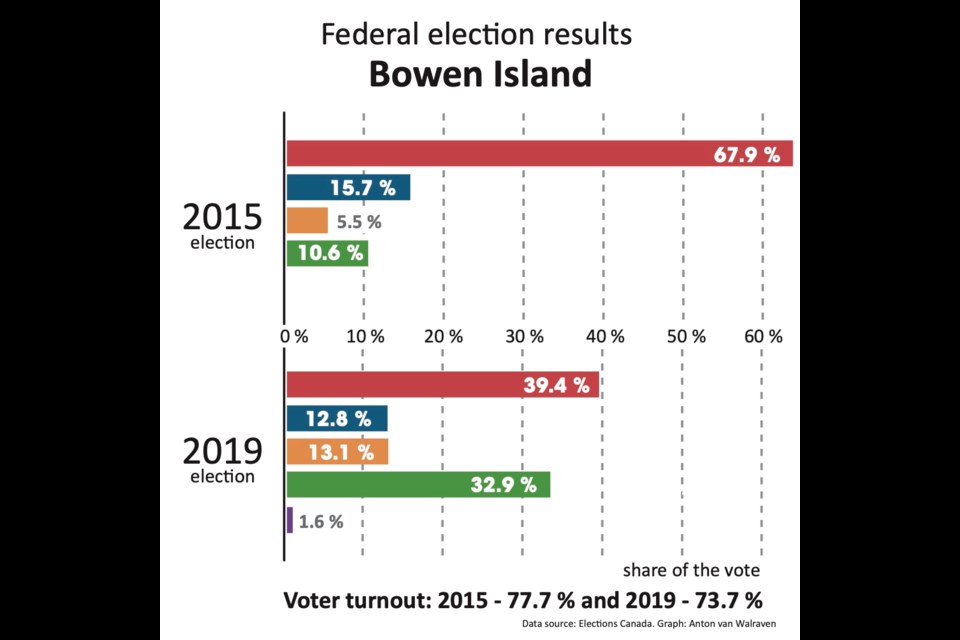Who to vote for in this election? I cannot help you with that, but I can help clarify some things about our riding of West Vancouver - Sunshine Coast - Sea to Sky country.
What are riding boundaries?
The riding has three distinct geographic sections:
West Vancouver section includes the Squamish Nation Capilano reserve and the whole of West Vancouver. (34,440 registered voters in 2019).
Sunshine Coast section includes all communities south of Saltery Bay, plus the west side of Átl’k a7tsem/Howe Sound (25,752 registered voters in 2019).
Sea to Sky country section includes the east side of Atl’ka7tsem/Howe Sound, and the whole Sea to Sky area from Lions Bay all the way up to D’Arcy in the north. (34,751 registered voters in 2019).
Note: The boundaries of the provincial riding of West Vancouver – Sea to Sky are very different. They don’t include the Sunshine Coast or West Vancouver neighbourhoods east of the line parallel with 29th Street in West Van.
What affects results long-term?
Obviously boundary redraws are sudden changes with a long-term effect. The slower demographic changes, like population growth, will affect the vote mostly in two ways. Other political priorities will show up in the vote, and the population growth itself will lead to boundary redraw over time.
The riding is due for a redraw as there is substantial growth in Sea to Sky and the Sunshine Coast section with young people, young families moving in. From the 2015 to the 2019 election, the number of registered voters in Sea to Sky section increased by 2,078, and in the Sunshine Coast by 1,625. The increase in West Vancouver: 861.
Election results 2015 and 2019
Election results are announced as whole riding totals. The 2019 election shows a big drop in the Liberal vote. The Conservative vote is very stable in both elections, even in actual numbers. Many Green and NDP voters voted strategically Liberal in 2015, and in 2019 they split the green-progressive vote: 22.4 % + 13.9 % = 36.3 % and would’ve carried the riding.
The graphs for the riding geographic sections show the voting differences between them. West Vancouver votes predominantly Liberal or Conservative. Conservatives remained committed even in the 2015 Liberal landslide. An election that also shows where people voted strategically Liberal. The 2019 election was more even on the Sunshine Coast, with a four- horse race, and Liberal and Green candidates competing in Sea to Sky.
The 2021 election
Can you use previous election results to make predictions about the 2021 elections? Yes we can. The site 338canada.com uses previous election results combined with current daily polling. I was sceptical at first, but the vote projections for 2019 were surprisingly close to the actual results.
Note: Things have changed since Aug. 28, but it is clear that Liberals and Conservatives are competing for the win with an edge for the Conservative candidate, while the NDP and Greens are projected to split the vote, although their combined vote would carry the riding as it would have in 2019.
Vote!
On Bowen Island, Gary Ander won the mayoral election receiving just two more votes than Melanie Mason. And we saw it again last year, when MLA Jordan Sturdy had just sixty votes more than Jeremy Valeriote.
Every vote counts.
So go out and vote on Sept. 20, or on the advance days from Sept 10 to Sept 13.
Or order your mail-in ballot like, right now.



